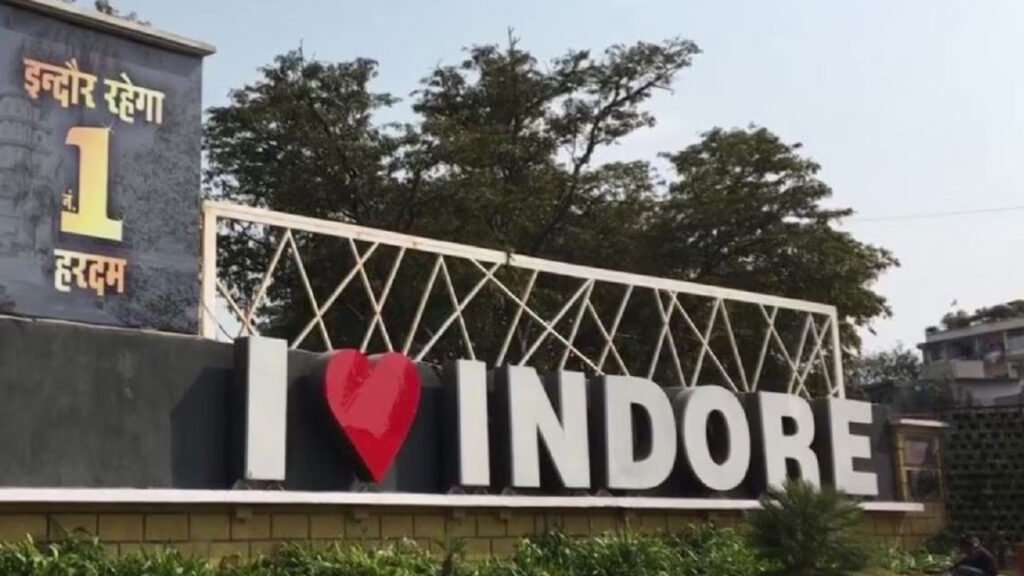The NDMC area in Delhi-NCR was the Cleanest city in the Union territories, while New Delhi-NCR ranked 3rd among 35 Capital regions in the Swachh Survekshan awards-2023.
Indore was declared the cleanest city in India along with Surat on Thursday. This is the 7th consecutive year that Indore has been named the cleanest city and the first time Surat has taken the pole position, even though they share the title.
The Swachh Survekshan awards-2023 were announced by the President of the Swachhiji Sammelan, Droupadi Murma, at the Bharat mandapam.
Navi Mumbai, who placed 3rd in the competition last year, maintained its position this year.
On the other hand, West Bengal accounted for three of the least ranked cities in the MIP category: Howrah (Howrah), Asansol (Kolkata), and Varanasi (Varanasi). Faridabad (Haryana) and Madurai (Tamil Nadu) ranked fourth and fifth respectively on the list.
The Delhi Municipal Corporation (MCD) ranked 90th among the 446 cities (over 100,000 population), while the Delhi Municipal Council (NDMC) area ranked 7th (NDMC area was ranked 3rd in the Capital Cities list).
The Swachh Survekshan survey is at the heart of the Union Government’s Swachh Bharat Mission, launched by the Narendra Modi government as one of its key initiatives in its first years in power. In the eighth survey, 3,000 evaluators across 4,500 cities (3,970 of which have a population of less than 100,000) participated to record city performance on 46 parameters, including waste collection, ample toilets and improved plastic waste management.
Inaugurating the panel of Swachh Survekshan-2023 at Bharat Mandapam in Delhi, President Murmu said that the Delhi Declaration of G20 Leaders is committed to improving ecological waste management, significantly reducing waste production by 2030 and highlighting the importance of zero-waste initiatives. Acknowledging the Cleanliness Survey 2024 theme of ‘Reduce, Reuse and Recycle’, he said, “It is highly commendable that the second phase of the Swachh Bharat Mission is monitoring waste management and the process of recycling and circular economy. More and more it is recycled. items have proven to be useful for sustainability.”
Hardeep singh puri, Union minister for housing and urban affairs said that every city in india is free from open defecation. “This was possible due to the transformation of the swachh Bharat mission from a government programme to a people’s movement,” Puri said.
After a slow start in 2016, 447 cities & urban local bodies (ULBs) are taking part in the swachh survekshan. This is the 8th edition of the survey. 12 crore people have responded to the survey, the minister said.
The New Delhi Municipal Council (NDMC) area was the most clean city in the Union territories and the New Delhi Metropolitan Region (NMR) was third among the 35 capital regions in terms of cleanliness.
Saswad (Maharashtra), which has a population of less than 100,00,000, came in second with Patan (Chadkhisgarh) being the third cleanest city, followed by Lonavala (Maharashtra).
Puri highlighted the increase in waste generation over the past few years. Puri said that cleanliness has turned into a social revolution, and the results can be seen all over the country. Puri added that waste processing has gone from 15% in 2014, to 76% by 2023. “In the next two to three years, 100% waste will be processed,” Puri said.
Chandigarh, the Union territory, has been selected as the Safaimitra SURAKshit Sheher. This tag is given to any city with sufficient institutional capacity, human resources and equipment, as well as a safe working environment for sanitation workers.
By March 2024, the ministry of social justice and empowerment’s national action for mechanised sanitation ecosystem scheme (NASS) has declared all Indian cities Safe Mitra surakshit.
In 2023, the theme of the swachh survekshan awards was ‘Waste to wealth for garbage-free cities’
This year, the cities scored 9,500 points, 53% of which were based on service-level progress. 26% were based on public-space and toilet certification, while 23% were based on residents’ feedback.
Surat, which was hit by plague in 1994, has come a long way since then and is now the cleanest city in India. The city is facing increasing migrations and industrialisation issues. However, according to the city’s municipal commissioner, it has integrated its infrastructure with sanitation & waste management facilities and used its integrated command & control centre to track waste management. Making cleanliness a mass movement’ has helped the city score well across all parameters, she added.
On the other side, the rankings for Bengal cities have been a source of controversy. “I haven’t read the report personally, but if it shows that the Bengal cities, including Calcutta, are amongst the worst performing, then it is a politically motivated report, and people can see that for themselves walking around the city.”
Atin Ghosh (Deputy Mayor, Kolkata) said that the awards not only add healthy competition between cities and states but also provide an opportunity for peer learning which has been lacking in the past. “Cities in western India, such as indore, surat, and naveen mumbai, are doing much better than their northern counterparts. The whole of the states are doing much better, and this shows that the people of these cities interact differently. There is much to learn from this.”
Another trend which has been observed over the past 3-4 years is that the smaller cities are performing better than their larger counterparts. This highlights the need to adopt a more decentralized approach for waste management.

